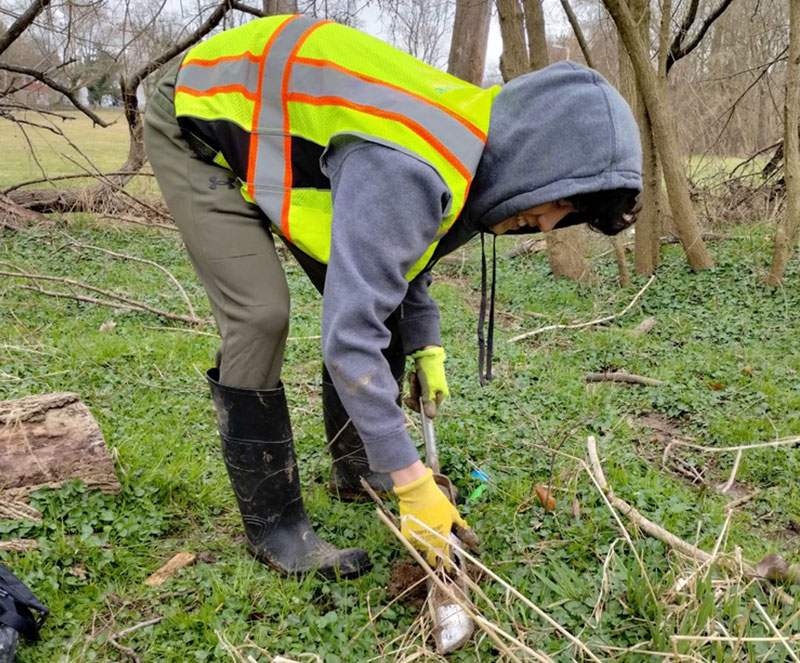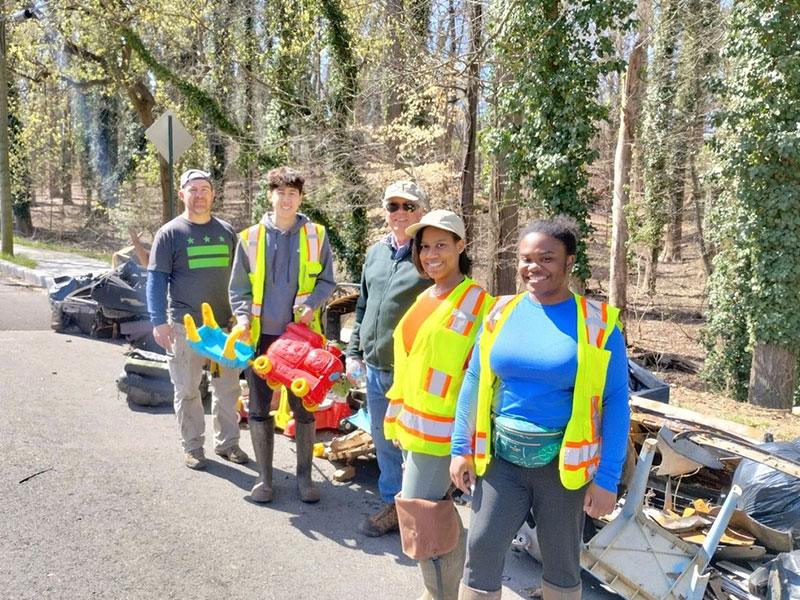My name is Paul, and I am a freshman environmental science and economics major at Johns Hopkins University. During my time at Biohabitats, I had the privilege of getting to see how professional environmental consultants tackle a wide range of tasks. Specifically, I found it fascinating to learn how all kinds of data collected from the field is translated into detailed design plans and proposals.
One of my favorite experiences was going with Tanaira and Austin to help with a wetland delineation. This was actually my first time ever collecting data for a project in the field, so it was very memorable. Tanaira and Austin showed me how to extract and analyze soil samples to determine their wetland classification status. This data was used to map the wetland’s boundaries so that they could be properly accounted for in plans for restoring the site. Being part of this gave me a deep appreciation for the extensive development process that goes into making each project a success.

Going into this internship as a freshman, I didn’t have much experience with professional ecosystem restoration. As a result, working at Biohabitats has been an incredibly impactful learning experience for me. It has been great learning how the specialties within restoration work such as landscape architecture, urban ecology, water resource engineering, environmental science, environmental policy, and more all come together to create solutions.
I also really appreciate how open and helpful everyone at Biohabitats has been to me over these past few months. It’s amazing how willing everyone is to share their valuable expertise. Meghan even arranged a weekly Q&A session where she would take time out of her day to answer all the questions that Kayla, the other spring intern, and I had about Biohabitats’ work!
Towards the end of the spring, Biohabitats gave us interns the opportunity to work on our own independent projects. Again, it goes without saying that I couldn’t have even attempted my project without all the generous assistance and input that various Biohabitats employees were able to offer me.
My project was inspired by Biohabitats restoration principles as well as some common permaculture practices. I combined aspects of each to create a design concept for urban community gardens aimed to simultaneously address both social and environmental issues. One of my main takeaways from this project was that plans for supporting people and plans for supporting the environment can often overlap!

That main takeaway also relates a lot to what Biohabitats has been teaching me the whole time. Whether it’s a community garden design like this to prevent contaminated runoff and promote biodiversity while still addressing food deserts and overpriced medicine or a restored stream design that’s a better habitat for wildlife as well as being safer for infrastructure, a thorough nature-based approach can usually find a restoration solution that benefits both environmental and social interests.
Interning at Biohabitats has been such a great experience. I hope to pursue a career related to the environment and sustainability, and I am so grateful for how the amazing people at Biohabitats have helped me learn so much and develop so many important skills that will help me with this goal in the future.

